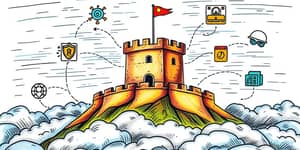
Every project carries inherent uncertainties that can derail objectives, inflate budgets, or stretch timelines. Without a structured approach to manage these pitfalls, even the most well-planned initiative can falter. A robust risk management plan serves as a compass, guiding teams through stormy contingencies toward clear deliverables.
In this article, we explore why a formal plan matters, break down its essential components, and offer a step-by-step framework to implement it. Along the way, you’ll discover real-world templates, best practices, and inspiring guidance to transform risk from a threat into a strategic advantage.
At its core, project risk management involves identifying potential threats, analyzing their impact, and responding effectively. According to industry research, well-executed risk management can increase project success rates by up to 30%, equipping teams to navigate uncertainties with confidence.
Consider a scenario where a supplier delay pushes a critical component delivery back by two weeks. Without a contingency strategy, the entire schedule lurches off course. With a plan, you’ve pre-identified alternative sources and mitigation steps, maintaining momentum and stakeholder trust.
A comprehensive plan ensures no element is overlooked. The following sections form the backbone of an actionable document:
Each section should be precise, offering actionable instructions and templates to guide team members at every project phase. A clear methodology fosters consistent decision-making and prioritization.
This framework ensures that risk management is not a one-off activity but a continuous cycle, adapting as the project evolves. Regular reviews keep the plan aligned with emerging challenges and opportunities.
This centralized risk register becomes a living, breathing document that teams consult at every milestone, ensuring no threat goes unnoticed or unmanaged.
Accountability is the cornerstone of effective risk management. Clear role definitions prevent confusion and delays in response. Typical assignments include:
Beyond the basics, consider these strategies to elevate your plan:
1. Align risk management with project objectives to ensure each response supports overall goals. 2. Foster stakeholder engagement and collaboration by inviting diverse perspectives. 3. Promote a culture where team members feel empowered to voice concerns early. 4. Use concise, clear, objective risk descriptions with ownership to avoid ambiguity.
Adopting lean and agile principles can streamline approvals and accelerate risk responses. Short feedback loops, paired with real-time monitoring tools, enable teams to pivot quickly when new threats arise.
True success comes when risk management is woven into daily routines rather than treated as a checkbox exercise. Encourage open forums for discussing near-misses, celebrate mitigations that prevent losses, and reward proactive risk hunters.
By building a risk-aware organizational culture transformation, teams internalize best practices and develop an anticipatory mindset—anticipating challenges before they manifest.
Remember, a well-crafted risk management plan is more than a static document; it’s a strategic asset that drives informed decisions, fuels stakeholder confidence, and safeguards your project’s future.
Implement this template as the foundation for your next initiative. Customize sections to fit your organizational needs, populate the register with real threats, and commit to regular reviews. With this roadmap, you’ll not only mitigate risks—you’ll harness them to strengthen your projects and propel them to lasting success.
References













